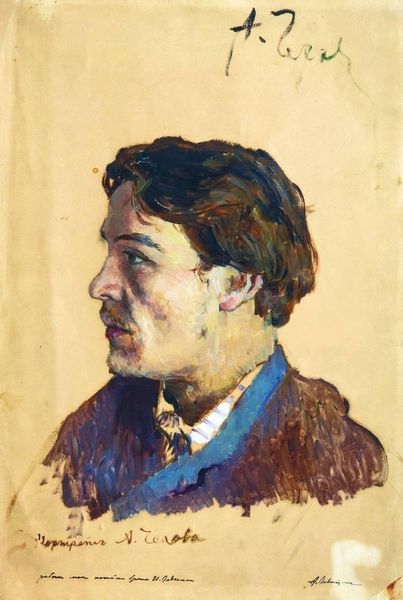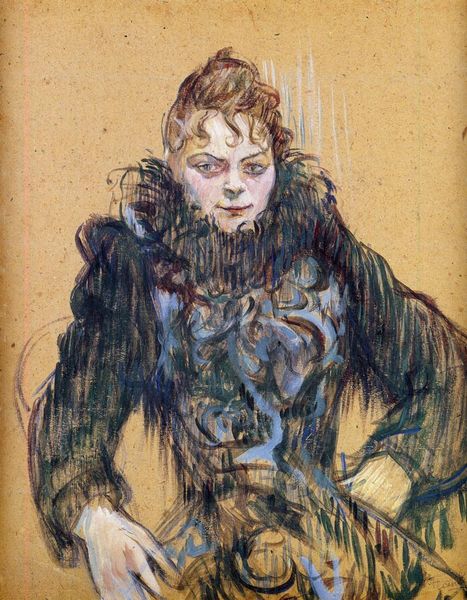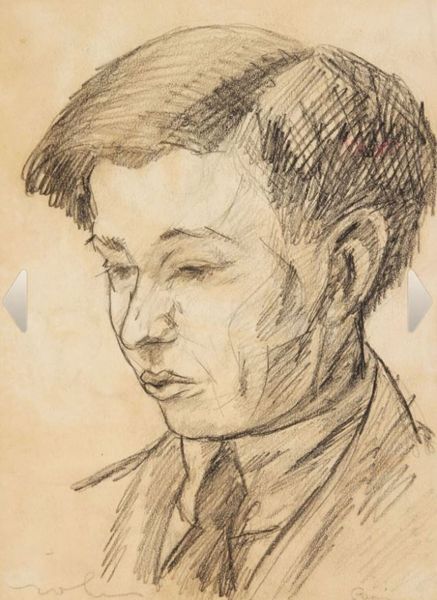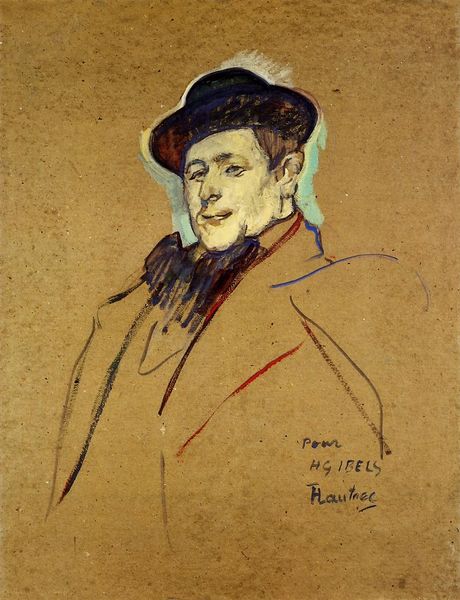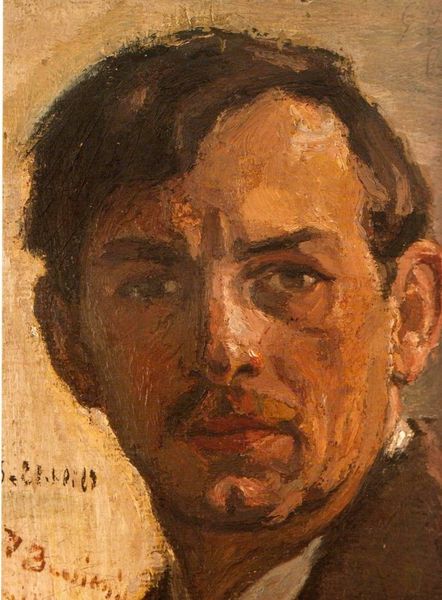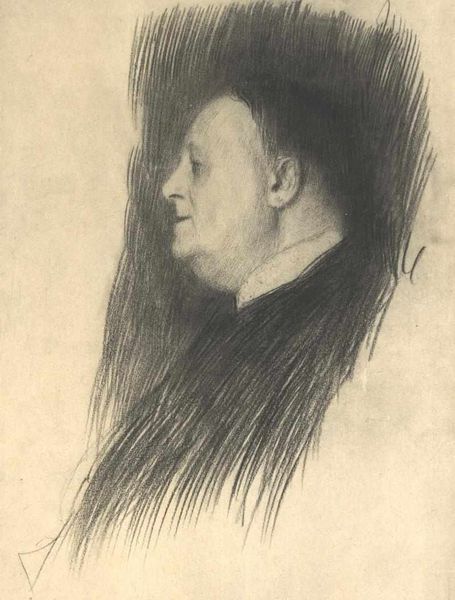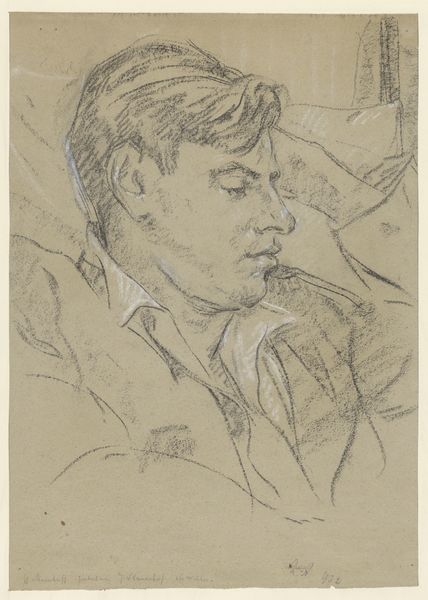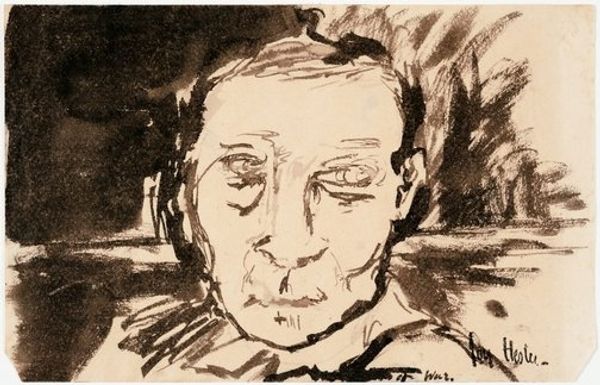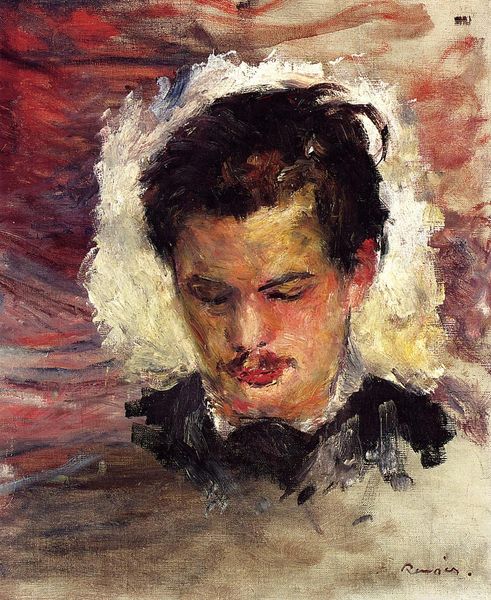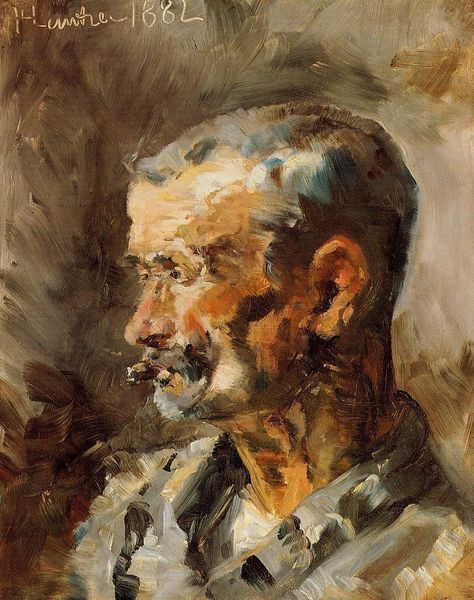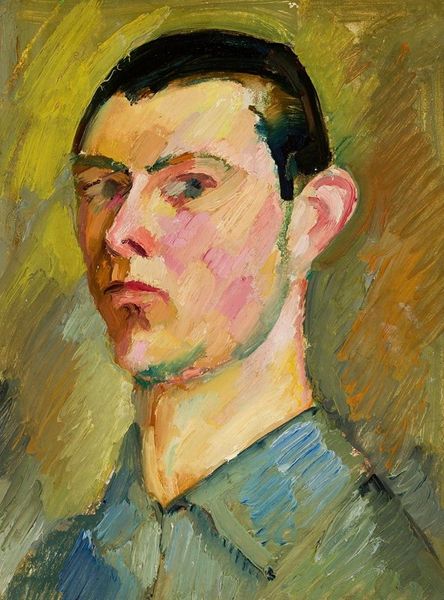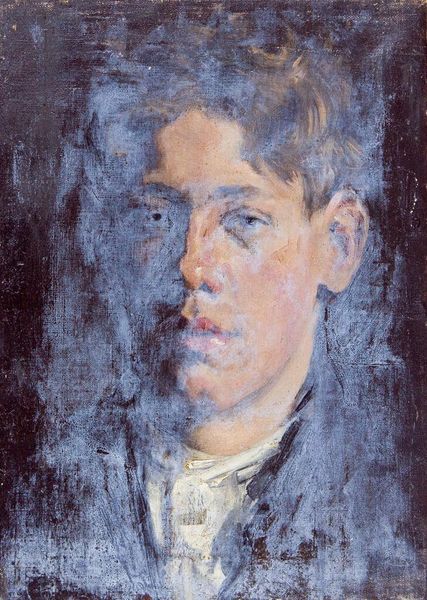
painting, oil-paint, impasto
#
portrait
#
painting
#
oil-paint
#
oil painting
#
impasto
#
post-impressionism
Dimensions: 55 x 35 cm
Copyright: Public domain
Curator: Welcome. Here we have Henri de Toulouse-Lautrec's oil painting, "Romain Coolus," created in 1899. It currently resides at the Musée Toulouse-Lautrec in Albi, France. Editor: It's...sketchy. Intimate. Almost unfinished, yet the expression is powerfully captured with such minimal means. What exactly strikes the eye first here? For me, it's the rawness, how immediacy in every visible stroke defines the form. Curator: Precisely! Look at the visible ground—a sort of raw sienna color setting the emotional register. Toulouse-Lautrec, as a Post-Impressionist, concerned himself with the essence rather than exact representation. The application of the oil paint, at times impasto, gives tangible form to mood. Note the thin, nervous lines creating the contours. Semiotically speaking, they index speed, observation, perhaps a fleeting moment in time. Editor: And doesn’t this "unfinished" quality offer access into Toulouse-Lautrec’s world? We see how image and identity operated in the cafes of Paris. The very roughness mirrors, in a way, the unvarnished realities that Toulouse-Lautrec often depicted in Montmartre. He knew Coolus personally, and captured a sort of…psychological realism? The way it shows up in his face tells us he's known. Curator: I agree completely. Observe the formal elements: The color palette is restrained, almost monochromatic, which intensifies the focus on the sitter's features. The angle too, just slightly from below, lends Coolus an air of… I'd say melancholy authority? Editor: Considering Toulouse-Lautrec's physical disabilities and social position, one might even say there’s an identification or commentary here on societal perceptions. The painting almost feels confrontational, defying polite portraiture of the time. The background suggests more than it actually details-- a very canny staging of the scene by the artist, reflecting theatricality. Curator: A sharp interpretation. Indeed, by concentrating less on meticulous detail and more on expressing an emotion or revealing a certain personality, "Romain Coolus" pushes the genre of portraiture in intriguing directions. It's also a marvelous study in suggestion, proving what one omits is just as important as what one includes. Editor: This particular artwork reminds me of art's potent ability to encapsulate both the subject and the society within which it exists. It challenges notions of who gets represented and how, sparking discourse. Curator: It seems like even today, "Romain Coolus," this arresting little portrait, invites a multi-faceted discussion around its technique, but most significantly the historical context that gave rise to it.
Comments
No comments
Be the first to comment and join the conversation on the ultimate creative platform.
